Are the greatest scientific minds of all time still relevant in shaping our world today? These luminaries, whose revolutionary theories and groundbreaking experiments have laid the foundations of modern science and technology, continue to profoundly influence various fields. From Albert Einstein's relativity theory to Marie Curie's pioneering work in radioactivity, this article explores the monumental achievements of these iconic innovators. By delving into their contributions, readers will gain a deeper appreciation for how these brilliant minds have not only expanded our understanding of the universe but also continue to inspire future generations of scientists.
Albert Einstein: Pioneer of Modern Physics
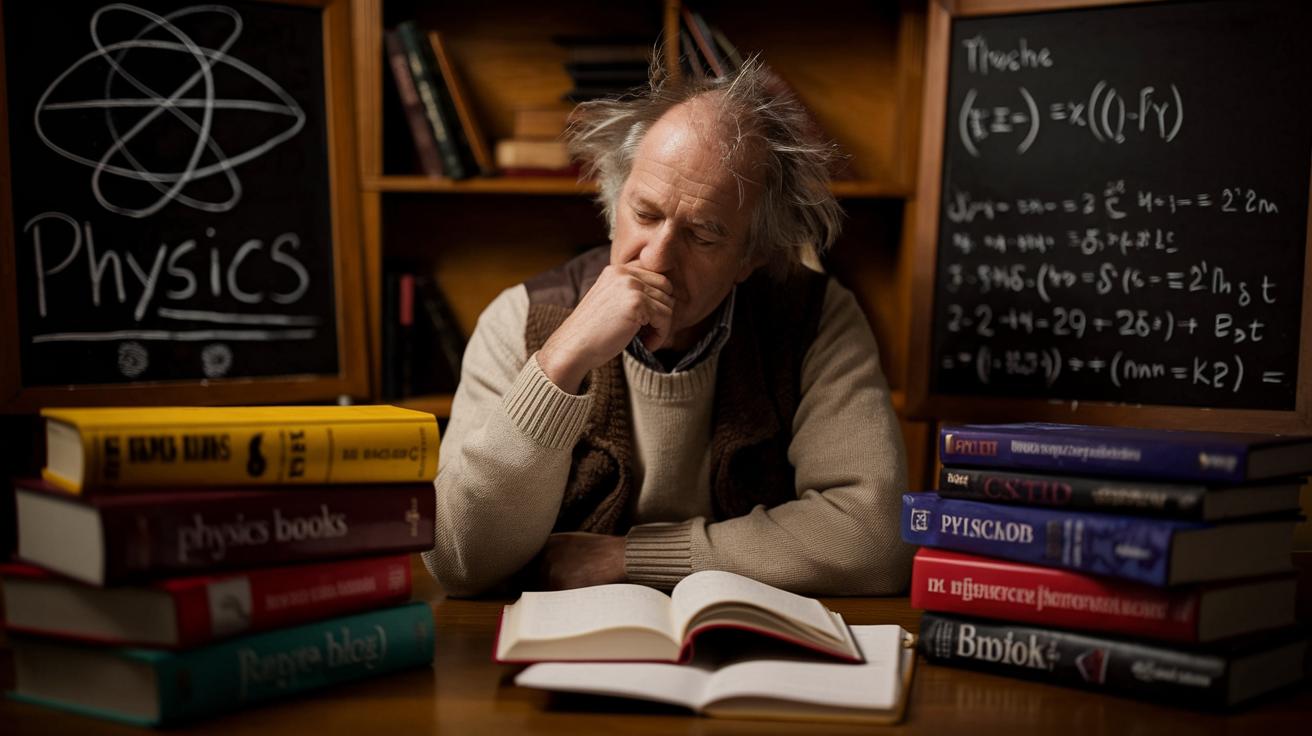
Albert Einstein is celebrated for his revolutionary theories that reshaped the landscape of physics. His theory of relativity, encompassing both the special and general relativity, fundamentally altered our understanding of time, space, and gravity. The special theory of relativity introduced the concept that time and space are interwoven into a single continuum known as spacetime, while the general theory extended this idea to include gravity as a curvature of spacetime caused by mass. His famous equation, E=mc², encapsulates the principle of mass-energy equivalence, suggesting that mass can be converted into energy and vice versa. This paradigm shift laid the groundwork for modern physics, influencing subsequent research in both theoretical and experimental physics.
- Theory of Special Relativity
- Theory of General Relativity
- Mass-Energy Equivalence (E=mc²)
- Photoelectric Effect
- Quantum Theory Contributions
Einstein's contributions extended beyond theoretical physics, impacting society and science profoundly. His work on the photoelectric effect, which demonstrated that light can be quantized, earned him the Nobel Prize in Physics in 1921 and was pivotal in the development of quantum mechanics. His insights fostered technological advancements and philosophical discussions about the nature of reality and the limits of knowledge, making him not only a scientific icon but also a cultural figure who continues to inspire generations worldwide.
Isaac Newton: Foundations of Classical Mechanics

Isaac Newton, a towering figure among historical scientists, profoundly influenced classical mechanics through his formulation of the laws of motion and the law of universal gravitation. These laws, pivotal in the realm of physics, provided a comprehensive framework for understanding the motion of objects. Newton's laws elucidate the relationship between a body and the forces acting upon it, laying the groundwork for future scientific breakthroughs and technological advancements.
| Law | Description |
|————————–|—————————————————————————–|
| First Law of Motion | An object at rest stays at rest, and an object in motion stays in motion unless acted upon by an external force. |
| Second Law of Motion | The acceleration of an object is directly proportional to the net force acting on it and inversely proportional to its mass. |
| Third Law of Motion | For every action, there is an equal and opposite reaction. |
Newton's contributions extend beyond physics, influencing mathematics and engineering. His work underpins modern technologies, from space exploration to structural engineering. The enduring legacy of his theories continues to shape scientific inquiry, serving as a foundational pillar for subsequent innovations across diverse disciplines. Newton's intellectual rigor and groundbreaking discoveries cemented his status as one of the most influential scientists of all time.
Marie Curie: Trailblazer in Radioactivity
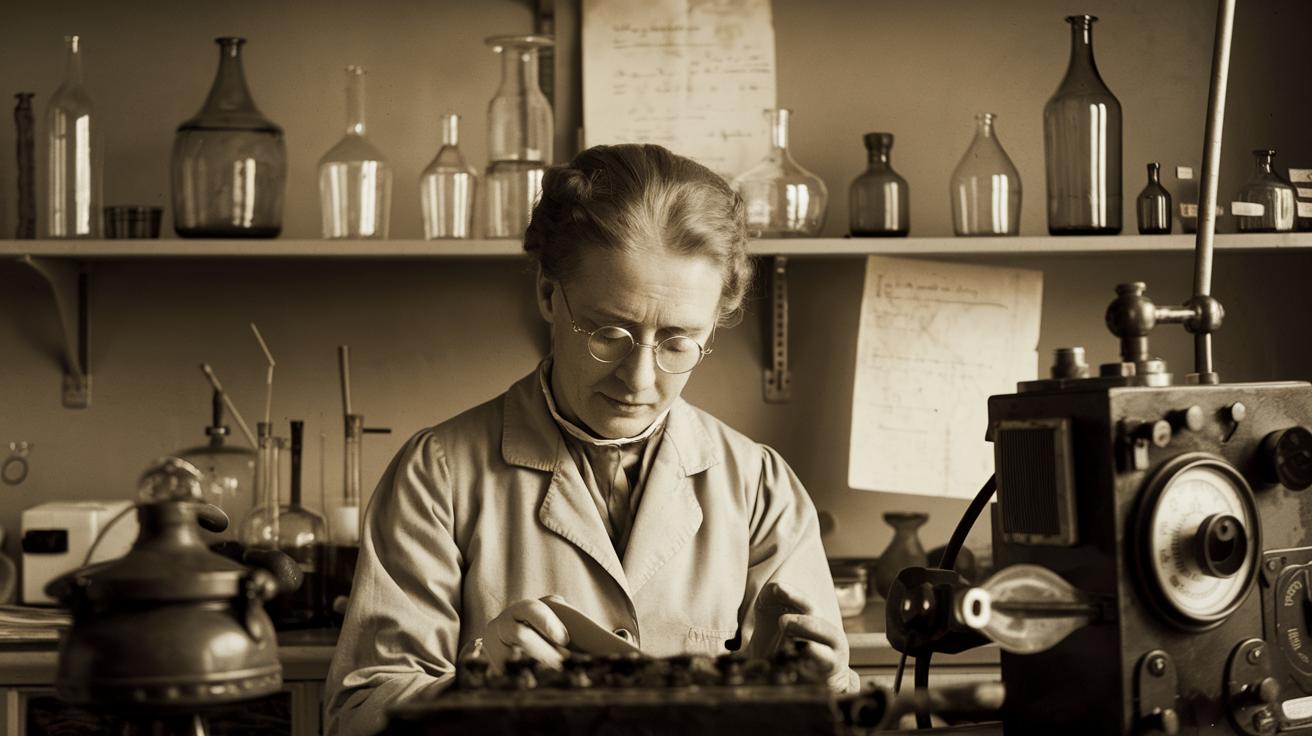
Marie Curie's pioneering research in the field of radioactivity marked a profound shift in scientific understanding and opened new avenues in chemistry and physics. Her groundbreaking work involved the discovery of two radioactive elements, polonium and radium, through meticulous research and experimentation. These discoveries were pivotal in advancing the field of nuclear physics and chemistry, providing a deeper understanding of atomic structure. Curie's dedication to her research was evident as she developed techniques for isolating radioactive isotopes, which laid the groundwork for future medical applications such as cancer treatment. Her innovative approaches and relentless pursuit of scientific truth not only expanded the realm of chemical discoveries but also established radioactivity as a critical area of study.
Curie was awarded the Nobel Prize in Physics in 1903, shared with her husband Pierre Curie and Henri Becquerel, for their collective work on radioactivity. She made history again in 1911 by winning the Nobel Prize in Chemistry, becoming the first and only person to receive Nobel Prizes in two different scientific fields. These accolades underscored her role as a leading figure in science and highlighted her significant contributions to both physics and chemistry.
Marie Curie's legacy transcends her scientific achievements; she is a symbol of perseverance and excellence in the scientific community, especially for women in science. Her work inspired generations of scientists and paved the way for future research in nuclear science and medicine. Curie's influence endures in the continual advancements in scientific exploration and the ongoing appreciation of her contributions to understanding the natural world.
Charles Darwin: Evolutionary Biology Pioneer
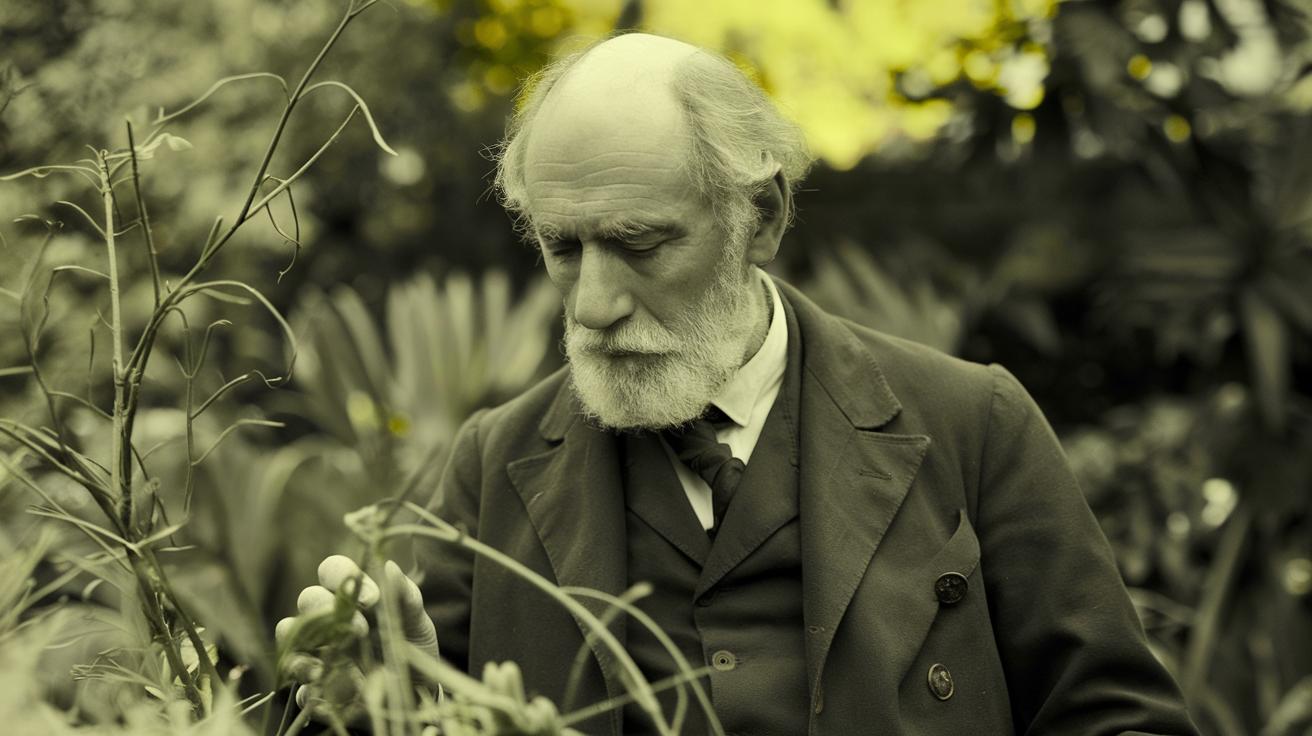
Charles Darwin's monumental contribution to evolutionary biology is encapsulated in his theory of evolution by natural selection. This groundbreaking concept, articulated in "On the Origin of Species" published in 1859, posited that species evolve over time through a process of natural selection, where traits beneficial for survival become more common in successive generations. Darwin's extensive observations during his voyage on the HMS Beagle, particularly in the Galápagos Islands, provided empirical evidence supporting his theory. The implications of his work extended far beyond biology, challenging existing paradigms and reshaping the understanding of life's diversity. By suggesting that all species share common ancestry, Darwin's theory laid the foundation for modern evolutionary studies, influencing genetics, ecology, and paleontology.
The initial reaction to Darwin's theory was mixed, sparking intense debate within scientific and religious communities. While some embraced his ideas as a transformative scientific breakthrough, others criticized it for contradicting established beliefs about creation. The scientific community eventually recognized the robustness of Darwin's arguments, facilitated by the subsequent discovery of genetic mechanisms that corroborated natural selection. This acceptance marked a pivotal shift in the scientific discourse, establishing evolution as a cornerstone of biological science.
The Influence of Darwin's Work on Modern Biology
Darwin's theory of evolution by natural selection remains integral to modern biology, providing a unifying framework for understanding the complexity of life. It underpins contemporary research in genetics, where the study of DNA elucidates the hereditary mechanisms of evolutionary change. Evolutionary theory also informs conservation biology, guiding efforts to preserve biodiversity by understanding species' adaptability to environmental changes. The principles of natural selection are applied across disciplines, from medicine to artificial intelligence, showcasing Darwin's enduring impact on scientific thought and innovation.
Nikola Tesla: Innovator in Electrical Engineering
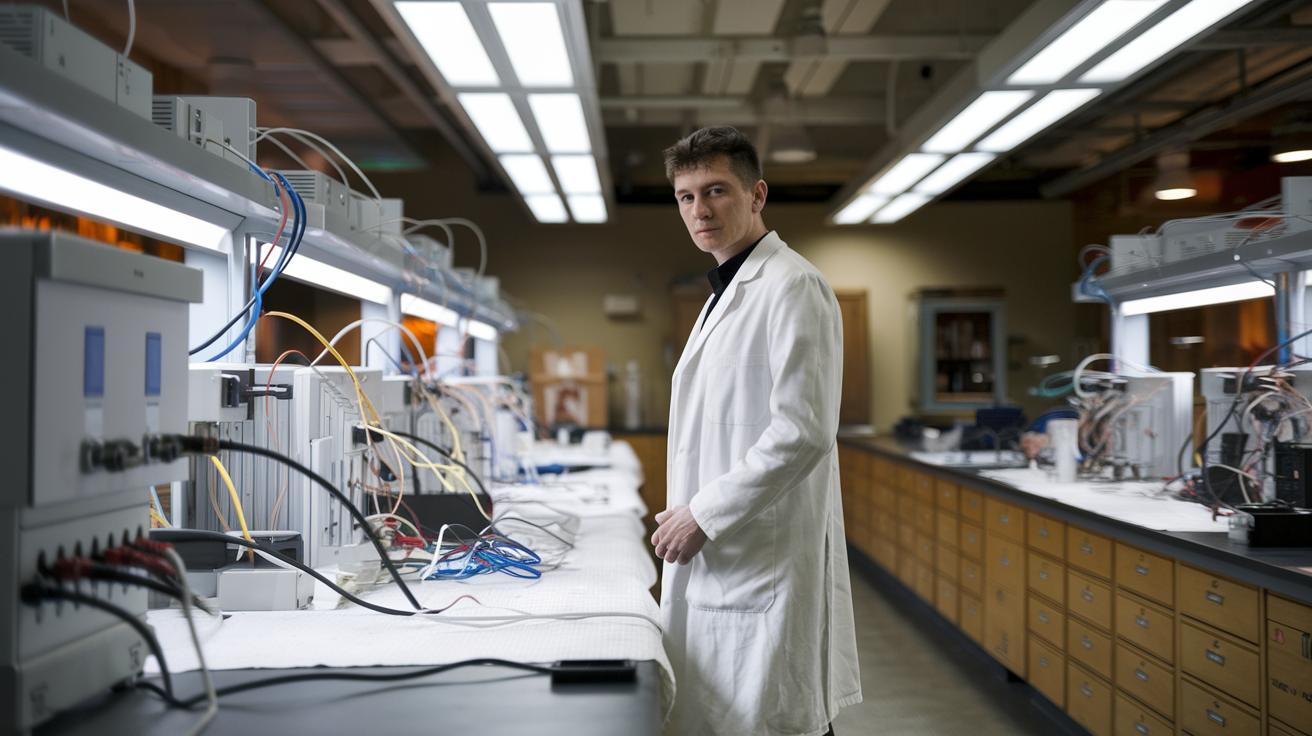
Nikola Tesla's pivotal role in advancing electrical engineering is epitomized by his development of the alternating current (AC) electricity supply system. AC electricity, which allows the transmission of power over long distances with minimal energy loss, revolutionized the way electrical energy was distributed, making it the standard for global power systems. Tesla's innovative AC motor and transformer designs were crucial in overcoming the limitations of direct current (DC) systems, which were dominant at the time. His collaboration with industrialists such as George Westinghouse facilitated the widespread adoption of AC technology, culminating in the successful lighting of the 1893 World's Columbian Exposition in Chicago. Tesla's visionary work laid the foundation for modern electrical grids, underscoring his profound impact on technological progress.
Tesla's inventive genius extended beyond AC electricity, as evidenced by his numerous patents and groundbreaking ideas. Among his notable inventions was the Tesla coil, an electrical resonant transformer circuit capable of producing high-voltage, low-current, high-frequency alternating current electricity. This invention not only showcased his mastery of electromagnetic principles but also became instrumental in the development of radio technology and wireless communication. Tesla's relentless pursuit of innovation is reflected in his work on wireless energy transmission and the early concepts of radar and X-ray technology, further cementing his legacy as a pioneering figure in electrical engineering.
- Alternating Current (AC) System
- Tesla Coil
- Induction Motor
- Wireless Energy Transmission
Tesla's contributions to modern technology are immeasurable, influencing a wide array of fields from electrical engineering to telecommunications. His innovative concepts laid the groundwork for future advancements in radio, television, and wireless communication technology. Tesla's ideas continue to inspire contemporary research in wireless power and renewable energy, making him an enduring icon of scientific impact and ingenuity. His legacy is celebrated not just for his technological achievements but also for his visionary approach to harnessing the power of electricity for the betterment of society.
Galileo Galilei: Father of Modern Astronomy

Galileo Galilei, a luminary of Renaissance science, transformed our understanding of the cosmos through his pioneering use of the telescope. By significantly improving this instrumental tool, Galileo enabled humanity's first detailed observations of celestial bodies. His enhancements, which included increasing the magnification power and refining the lens quality, allowed him to observe the surface of the Moon, revealing its mountainous terrain and challenging the prevailing notion of celestial perfection. Furthermore, Galileo's observations of the moons orbiting Jupiter provided compelling evidence for heliocentrism, the model proposing that planets revolve around the Sun. These findings were radical at the time, as they contradicted the geocentric model endorsed by the Church. His meticulous approach and willingness to question established doctrines marked a pivotal shift in scientific inquiry, laying the foundation for modern astronomy.
- The four largest moons of Jupiter (Io, Europa, Ganymede, Callisto)
- Phases of Venus, which supported the heliocentric model
- Detailed observations of the Moon's surface, including craters and mountains
- Sunspots, challenging the notion of the Sun as a flawless celestial sphere
Galileo's influence extended beyond his astronomical discoveries, significantly impacting the scientific method. His rigorous approach to experimentation and observation set new standards for scientific investigation, emphasizing empirical evidence and rational analysis. As a key figure in the Renaissance, Galileo's work bridged the gap between ancient and modern science, inspiring future generations of scientists to explore the natural world with curiosity and skepticism. His legacy as an influential scientist endures, illustrating the transformative power of scientific exploration and critical thinking.
Louis Pasteur: Revolutionizing Microbiology and Medicine
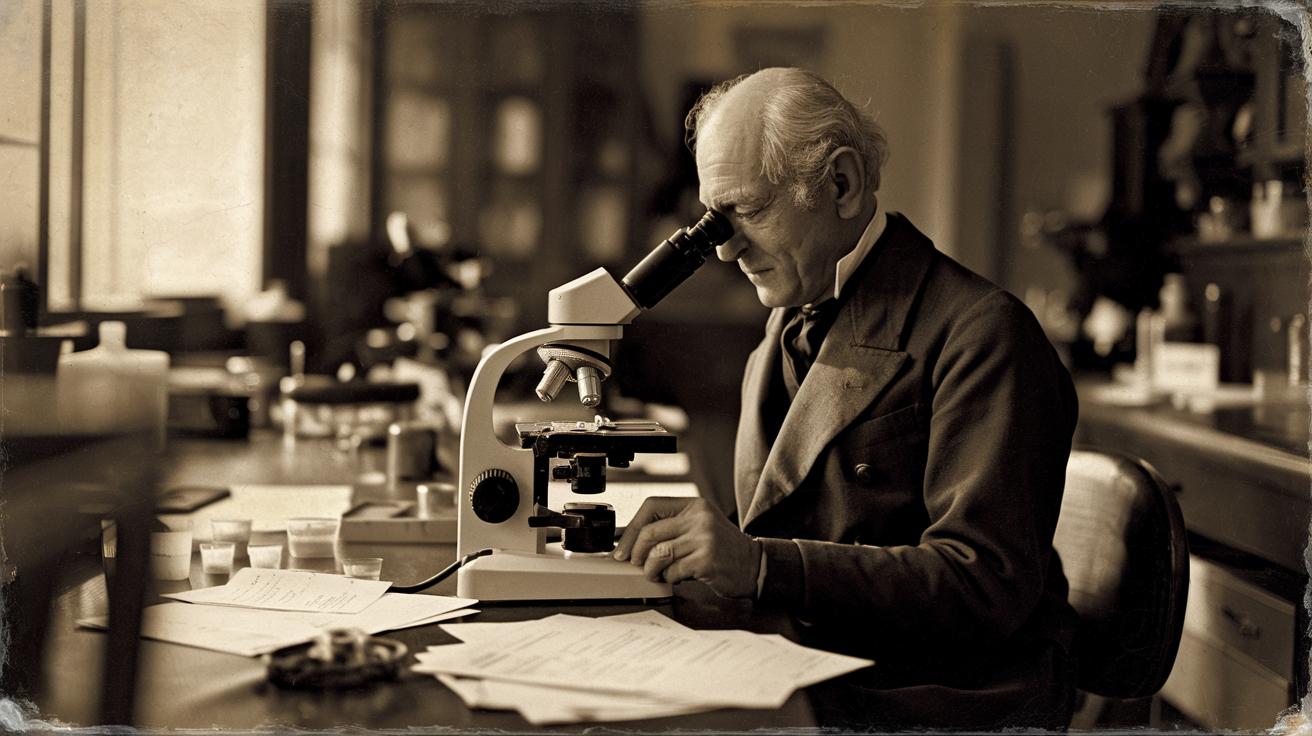
Louis Pasteur's pioneering work in microbiology fundamentally altered the scientific community's understanding of disease causation through his development of the germ theory. This theory posited that microorganisms, rather than spontaneous generation, were responsible for disease, profoundly shifting the medical paradigm of the time. Pasteur's meticulous experiments, such as his fermentation studies, demonstrated that specific microbes caused specific diseases, laying the foundation for bacteriology as a scientific discipline. His discoveries not only challenged existing scientific beliefs but also paved the way for modern medical practices, including sterilization and pasteurization, which have become integral to public health and food safety.
Pasteur's contributions extended beyond theory with the creation of vaccines, notably for rabies and anthrax. His innovative approach to vaccine development involved attenuating the virulence of pathogens, thus providing immunity without causing disease. The success of these vaccines marked a significant advancement in preventive medicine, demonstrating the practical applications of his germ theory. Pasteur's work in this field established a model for future vaccine development, contributing to the control and eradication of infectious diseases.
The broader impact of Pasteur's work is reflected in the transformative changes in public health policies and practices. By providing empirical evidence for the germ theory and the effectiveness of vaccination, Pasteur influenced the implementation of sanitary measures and immunization programs worldwide. His contributions to science and culture extended beyond his lifetime, as his work continues to inspire innovation and progress in the scientific community, underscoring the importance of research in improving human health and well-being.
James Clerk Maxwell: Unifying Electromagnetism
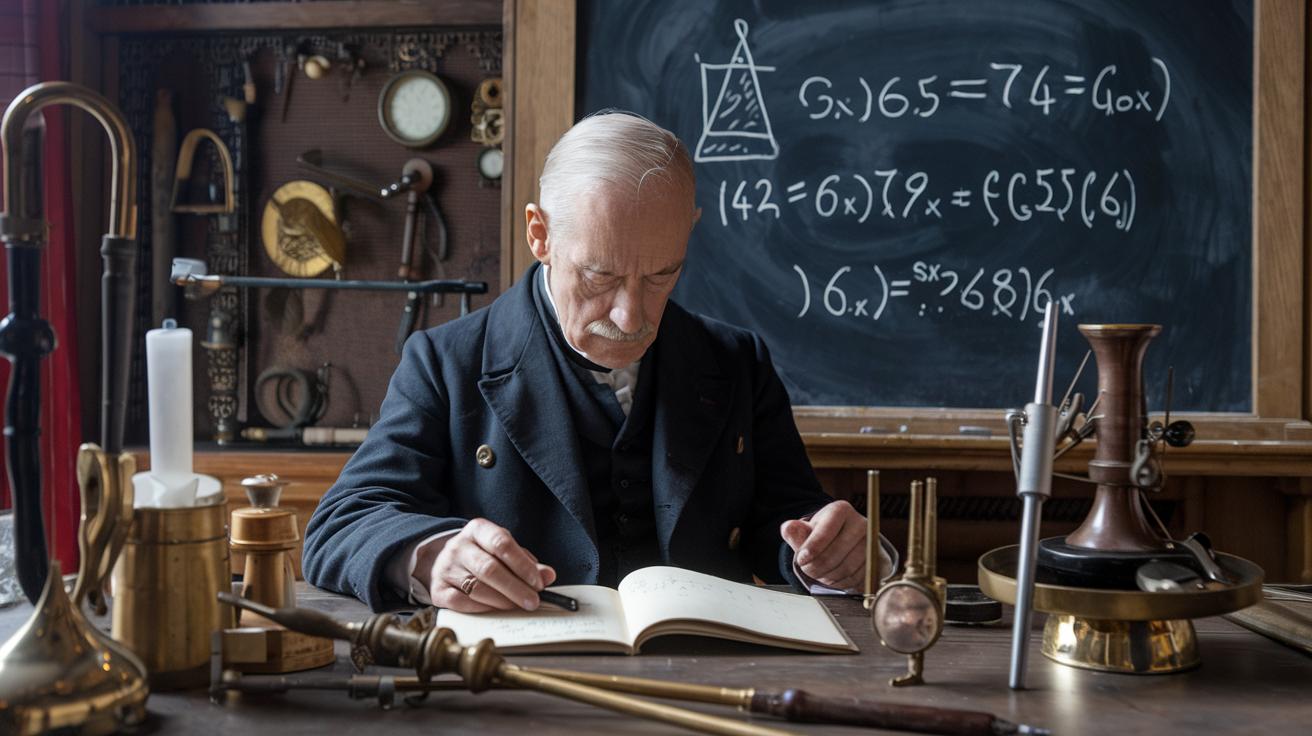
James Clerk Maxwell's contributions to theoretical physics revolutionized the understanding of electromagnetism. By formulating the classical theory of electromagnetic radiation, Maxwell unified the concepts of electricity, magnetism, and light into a single theoretical framework. His equations, known collectively as Maxwell's equations, elegantly described how electric and magnetic fields interact and propagate through space. These equations demonstrated that light itself is an electromagnetic wave, traveling at a constant speed, which was a groundbreaking revelation at the time. Maxwell's work provided the theoretical basis for the eventual development of numerous technologies, including radio, television, and radar, and laid the groundwork for significant advancements in both physics and engineering.
The implications of Maxwell's work extend far beyond the initial discovery, influencing a vast array of scientific fields. His unification of previously separate phenomena into a cohesive theory not only advanced the understanding of electromagnetic forces but also inspired further exploration into the nature of light and energy. This laid the foundation for the eventual formulation of quantum mechanics and the theory of relativity, showing the interconnectedness of fundamental forces. As a result, Maxwell's insights remain pivotal in modern scientific research, continuing to inform and inspire new generations of physicists.
Maxwell's Equations and Their Impact
Maxwell's equations are a cornerstone of modern physics, encapsulating the principles that govern electromagnetic fields. They consist of four partial differential equations that describe how electric charges produce electric fields, how currents produce magnetic fields, and how changing magnetic fields induce electric fields. These principles are fundamental to the understanding of electromagnetic waves, encompassing everything from radio waves to visible light. The importance of Maxwell's equations is evident in their widespread application, influencing technological innovations and deepening the comprehension of fundamental physical laws. Through these equations, Maxwell's legacy endures, highlighting his status as a transformative figure in the scientific community.
Rosalind Franklin: Key Contributor to DNA Structure Discovery
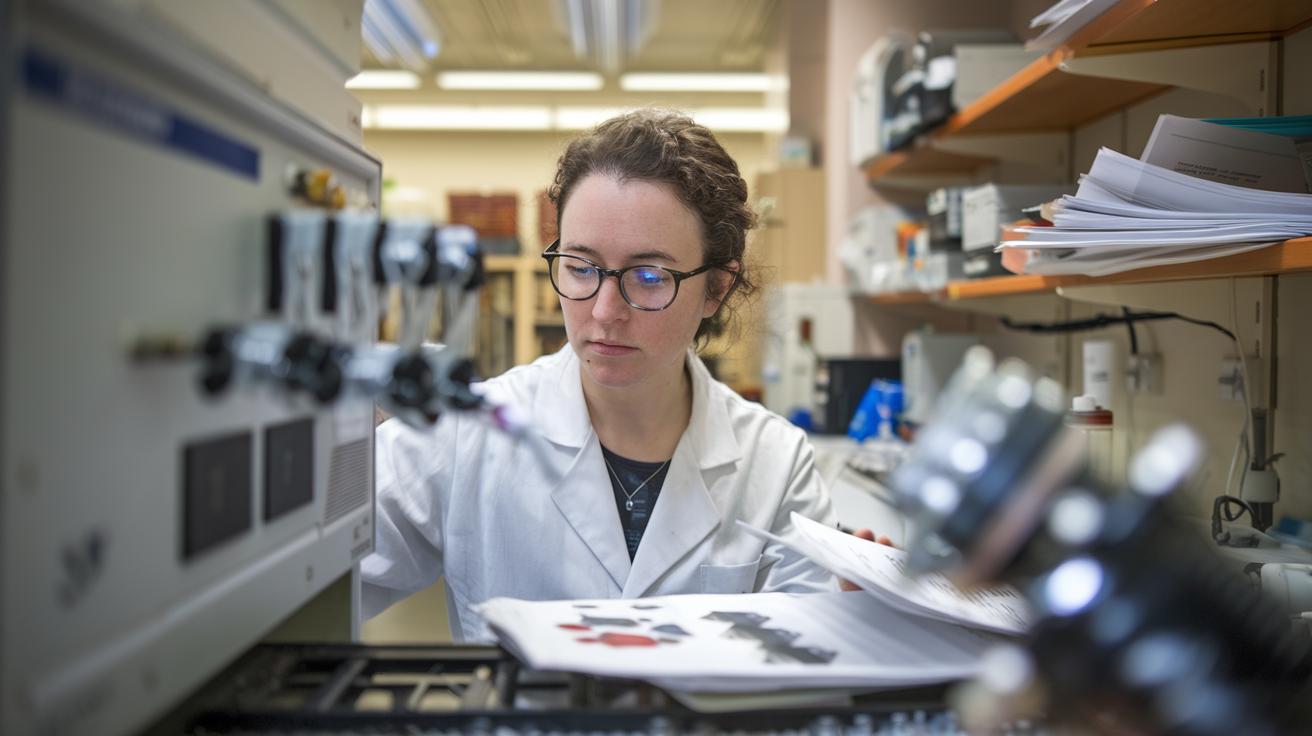
Rosalind Franklin's pivotal contributions to molecular biology are underscored by her meticulous research on the DNA structure. Her expertise in X-ray crystallography enabled her to capture the famous "Photo 51," a clear diffraction image of DNA that provided essential insights into its helical structure. This image was instrumental in revealing the double helix configuration, which became the foundation for understanding genetic replication and function. Franklin's methodical approach and precise interpretation of X-ray data significantly advanced the field of molecular biology, contributing to the elucidation of DNA's role as the carrier of genetic information. Her work laid the groundwork for subsequent breakthroughs in genetics and biotechnology, fostering a deeper comprehension of life's molecular underpinnings.
- Captured the critical X-ray diffraction image "Photo 51"
- Provided essential insights for determining the DNA double helix structure
- Advanced the application of X-ray crystallography in biological research
Franklin's impact extends beyond her scientific achievements, serving as a beacon for women in science. Despite facing gender-based challenges, her perseverance and scientific acumen earned her recognition as a prominent figure in the scientific community. Her contributions have inspired countless women to pursue careers in science, advocating for gender equality and diversity in research fields. Rosalind Franklin's legacy endures as a testament to the vital role of women in advancing scientific knowledge and innovation.
Michael Faraday: Pioneer of Electromagnetism
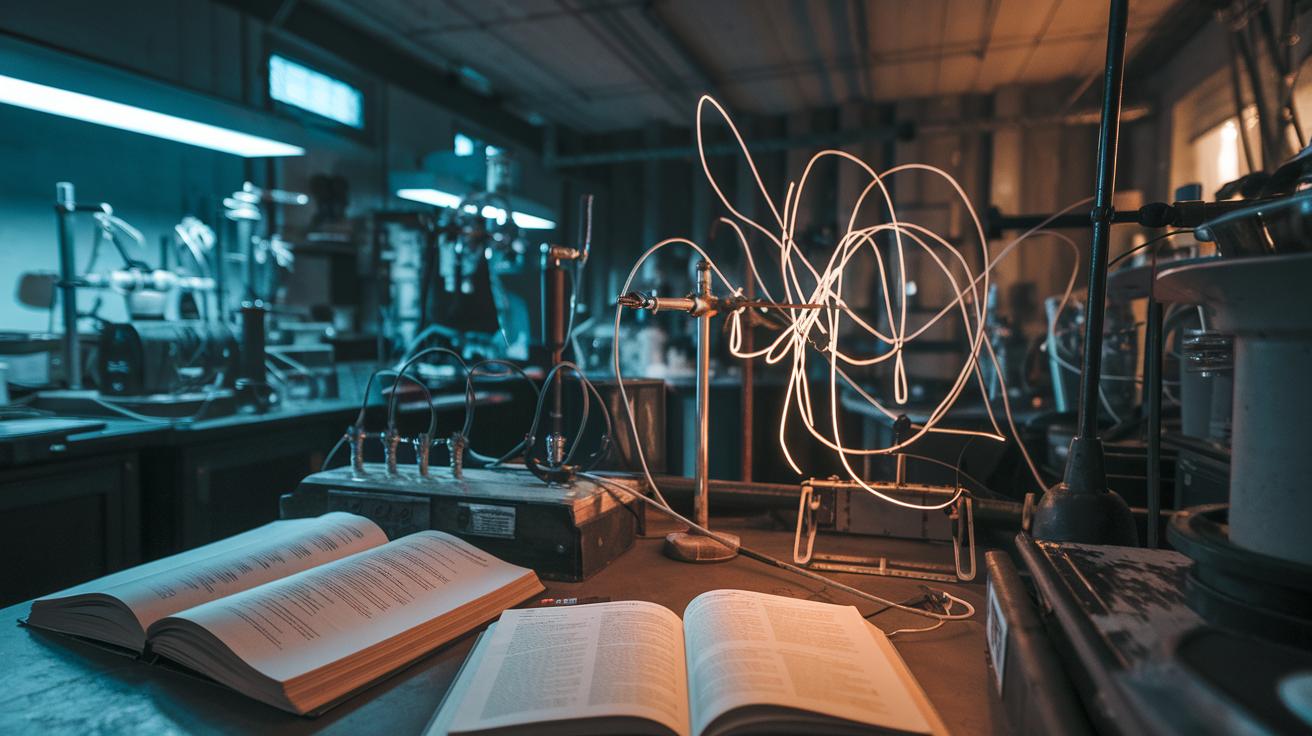
Michael Faraday's groundbreaking experiments in electromagnetism laid the foundation for numerous technological advancements that define modern society. His exploration of nature through rigorous scientific inquiry led to the discovery of electromagnetic induction, a principle that underpins the operation of electric motors and generators. Faraday's experiments demonstrated how a changing magnetic field could induce an electric current in a conductor, a discovery that was pivotal in harnessing electricity for practical use.
| Invention | Impact |
|——————-|——————————————————————————————|
| Electric Motor | Enabled the conversion of electrical energy into mechanical energy, revolutionizing machinery and transportation. |
| Generator | Allowed for the production of electrical energy from mechanical energy, essential for power generation and distribution. |
Faraday's influence on modern technology extends far beyond his inventions. His work in electromagnetism not only facilitated the development of electrical engineering but also inspired future generations of scientists and engineers to explore the natural world with curiosity and precision. The principles he discovered have become fundamental to the operation of countless devices and systems, from household appliances to large-scale power grids. Faraday's legacy as a pioneer of scientific discovery and exploration of nature endures, highlighting the profound impact that diligent scientific inquiry can have on technological progress and human advancement.
Final Words
Exploring the 10 best scientists of all time reveals the profound impact these individuals have had on our understanding of the world. Figures like Albert Einstein and Isaac Newton revolutionized our perception of physics with groundbreaking theories, while Marie Curie and Rosalind Franklin advanced scientific knowledge, emphasizing the importance of women in science. The contributions of these scientists continue to influence modern technology and scientific inquiry. Their legacies inspire future generations, underscoring the enduring relevance of scientific discovery as a pillar of progress and innovation.
FAQ
Q: What are Albert Einstein's most significant contributions to physics?
A: Albert Einstein's major contributions include the theory of relativity, fundamentally altering our understanding of time, space, and gravity, resulting in the famous equation E=mc², which revolutionized modern physics.
Q: How did Isaac Newton impact classical mechanics?
A: Isaac Newton formulated the laws of motion and universal gravitation, laying the groundwork for classical mechanics, still foundational in physics today.
Q: What were Marie Curie's achievements in radioactivity?
A: Marie Curie's pioneering work in radioactivity led to her being the first woman to win a Nobel Prize and the only person to win in two scientific fields, enhancing chemistry and physics.
Q: How did Charles Darwin's theory influence biology?
A: Charles Darwin developed the theory of evolution by natural selection, profoundly impacting biology and enhancing understanding of life's diversity.
Q: What was Nikola Tesla's role in electrical engineering?
A: Nikola Tesla was pivotal in developing AC electricity supply systems, influencing modern electrical engineering with inventions like the Tesla coil.
Q: What advancements did Galileo Galilei make in astronomy?
A: Galileo Galilei significantly enhanced the telescope, making groundbreaking astronomical observations that supported heliocentrism and shaped modern astronomy.
Q: How did Louis Pasteur transform microbiology and medicine?
A: Louis Pasteur developed the germ theory of disease and created vaccines for rabies and anthrax, revolutionizing medical microbiology and public health practices.
Q: What is James Clerk Maxwell known for in electromagnetism?
A: James Clerk Maxwell formulated the classical theory of electromagnetic radiation, unifying electricity, magnetism, and light, influencing modern physics.
Q: What role did Rosalind Franklin play in DNA research?
A: Rosalind Franklin's X-ray diffraction images were critical in discovering DNA's double helix structure, advancing molecular biology and contributing to scientific research recognition.
Q: What innovations did Michael Faraday contribute to electromagnetism?
A: Michael Faraday's experiments led to the invention of the electric motor and generator, integral to modern technology and scientific advancement.

